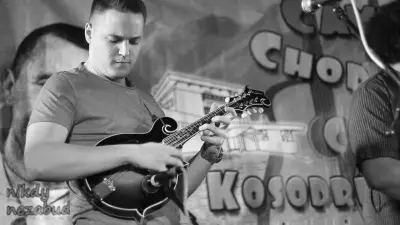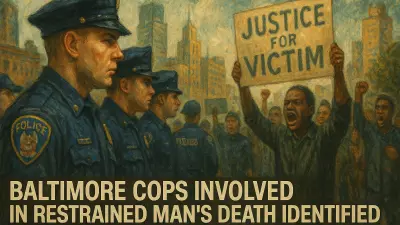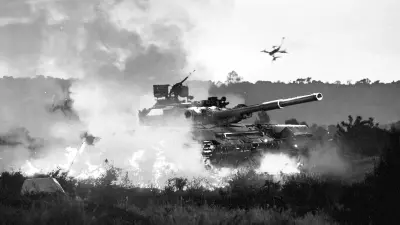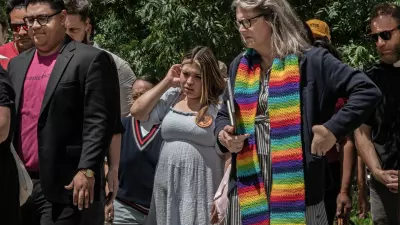Bluegrass musician and professor Lee Bidgood traveled deep into the heart of Slovakia to discover locals’ appreciation for Bluegrass music, a tradition of affection for Appalachia going back more than a century.
So, wait…

There’s a bluegrass music festival in Slovakia?
On top of a mountain?
In the middle of winter?
Yes, indeed, to all three.
In fact, I’ve attended this celebration of what is commonly considered “Appalachian music” held in a remote part of this Central European country.
I first heard about “Kosodrevina Muzikantský Kemp” (Kosodrevina Musicians’ Camp) in 2007 while in the neighboring Czech Republic researching my dissertation on Czech Bluegrassers (that’s a whole other story).
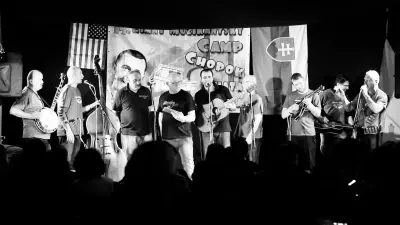
You see, Bluegrass music has long flourished in Slovakia – as it has among Czechs – beginning in the 19th century, fueled in part by global fascination with the American Wild West.
In the 1950s, during the Cold War, Armed Forces radio often played Country and Bluegrass, which was heard in then-Czechoslovakia.
By the 1970s-80s, the Folk and Country fad in pop music brought attention to new banjo and country songs that also gained an audience behind the Iron Curtain.
Today, Slovakians freely access and enjoy Bluegrass music like most anyone else in the world.
So, while working on my dissertation, I learned more about Kosodrevina, which takes its name from the lodge where it’s held: a communist-era structure that inside resembles the prefabricated and slowly crumbling dormitories where I stayed while living as a student in Prague.
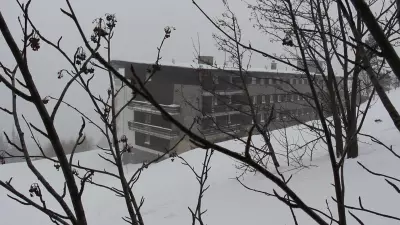
for bluegrassers who gather there each year. Image courtesy of Lee Bidgood.
The lodge or chata is at 4,900 feet above sea level on a mountain named Chopok in the Lower Tatras, a mountain range of the Inner Western Carpathians in central Slovakia.
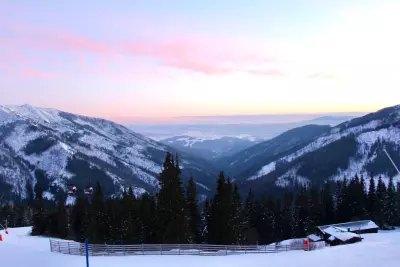
Asking around, I heard stories of legendary jams, equipment laboriously hauled up the mountain — and someone who arrived on Friday night after the chairlift had closed and hiked through the snow (with instrument, of course) over a mile, up 1,000 feet in elevation.
It seemed a place, a gathering, a phenomenon that led to the creation of vivid experiences and stories. I was intrigued.
In 2019, I was invited to travel to Kosodrevina and sit in on fiddle with an impromptu band thrown together for the occasion. In addition to keeping up with the top-shelf musicians I was supposed to perform with, I decided to document in video the event so that others could have a sense of Kosodrevina, the place, the people, and how it all comes together.
I’m not a filmmaker. Having co-produced a feature-length documentary (Banjo Romantika, dir. Shara Lange, 2015) made that clear to me.
However, I am an ethnomusicologist for whom sound and visual recording has been a central fieldwork methodology.
Video is a powerful way to connect members of the worldwide bluegrass scene — it captures details of performance practice and social setting that allow a person in the United States or elsewhere to compare and contrast Czech and Slovak approaches to bluegrass with the way they make music.
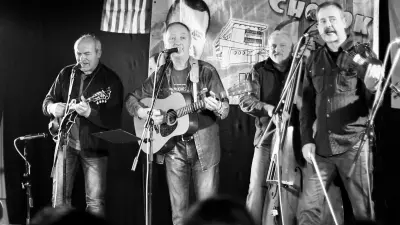
Whether you’re a Bluegrass musician, a lover of Appalachian sounds, or a newcomer to the genre, I hope you enjoy this look at a transcontinental musical tradition that continues to grow.
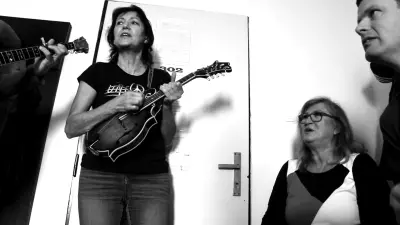
“How Mountain Girls can Love,” “Dievky z hôr.” Image courtesy of Lee Bidgood.
Check out the full version of this tale of bluegrass music flourishing outside of the United States at Appalachian Places, a digital magazine published by the Center of Excellence for Appalachian Studies and Services at East Tennessee State University.

